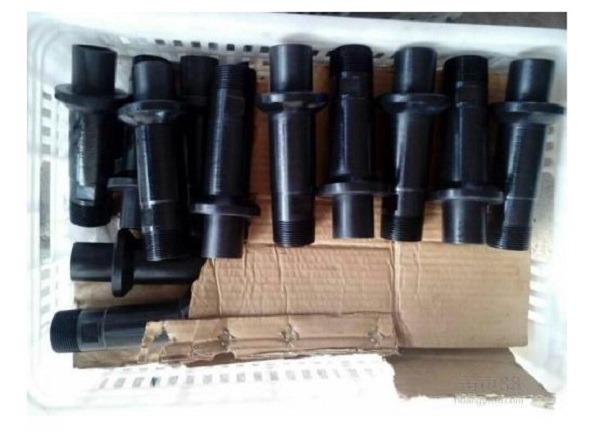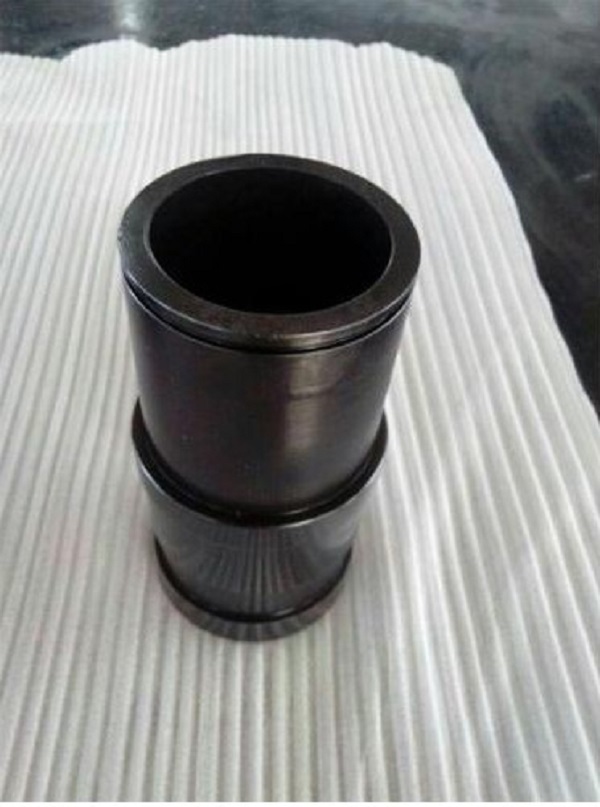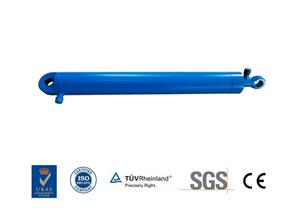QPQ metal surface treatment process
I. Process Introduction
QPQ is the abbreviation of English Quench—Polish-Quench. The original meaning is quenching-polishing-quenching. After the salt bath compound treatment, in order to reduce the roughness of the workpiece surface, the workpiece surface can be polished once, and then oxidized in the salt bath. This requires precision parts and workpieces with high surface roughness. It is very necessary. QPQ salt bath composite treatment technology can greatly improve the wear resistance and corrosion resistance of the metal surface, and the workpiece hardly deforms. It is a new metal surface strengthening modification technology. This technology realizes the compounding of nitriding and oxidation processes; the compounding of nitrides and oxides; the compounding of wear resistance and corrosion resistance; the compounding of heat treatment technology and anticorrosion technology.
QPQ salt bath composite treatment technology was invented by the German company in the 1970s. After decades of continuous development and improvement, the application range has become wider and wider. Therefore, it is regarded as a huge progress in the field of metal surface strengthening technology. It is a new metallurgical method. At present, QPQ salt bath composite treatment technology has also been widely applied in China, especially in automobiles, motorcycles, axle products, electronic parts, textile machines, machine tools, electrical switches, and molds.
Technical characteristics:
1.Good abrasion resistance
In the QPQ process, a metal material reacts with a salt bath liquid at an operating temperature of 570 ± 10 ° C, and a fine compound layer can be formed on the metal surface. The compound is completely composed of ε-iron nitride, which can effectively improve the hardness and compactness of the metal surface, so that the metal surface has good wear resistance. The hardness of the surface of the metal material after treatment mainly depends on the alloy elements in the steel. The higher the alloy element content, the higher the hardness of the penetration layer. According to the hardness of the penetration layer, the commonly used materials can be divided into the following categories:
(1) Carbon steel, low-profile gold steel
Representative steel number: 20, 45, TiO, 20Cr, 40Cr, etc. Surface hardness of infiltration layer: 500—700HV
(2) Alloy steel
Representative steel number: 3CrW8V, Crl2MoV, 38CrMoAl, 1Crl3--4Cr13 and so on. Surface hardness of infiltration layer: 850—1000HV
(3) High-speed steel and austenitic stainless steel
(4) Cast iron surface hardness:> 500HV
The following figure is the sliding wear test data of a workpiece made of 40Cr material after different treatment methods. Based on the QPQ wear value of 0.22mg, the wear resistance of the QPQ process is 2.1 times that of hard chromium plating and 2.8 times that of ion nitriding. 23.7 times of induction hardening and 29.4 times of conventional hardening.
2.Good corrosion resistance
The following figure shows the comparison between the neutral salt spray test of 45 # steel after QPQ salt bath composite process, decorative chrome plating, hard chrome plating, and ordinary blackening treatment with 1Cr18Ni9Ti stainless steel and 1Cr13 material. It can be seen that the corrosion resistance of 45 # steel after QPQ treatment is 5 times that of 1Cr18Ni9Ti stainless steel, 70 times that of hard chromium plating, and 280 times that of ordinary blackening. After other materials are processed by the QPQ process, the neutral salt spray test can reach 100-300 hours.
3.Good fatigue resistance
After the QPQ salt bath composite process is applied, the metal surface introduces and generates a high residual compressive stress. As a result, various types of fatigue resistance are greatly improved. It has been proved through experiments that the fatigue resistance can be increased by about 100%, and the mitigation point The occurrence of surface defects such as corrosion and rust.
4.Minimal deformation
Due to the low process temperature of QPQ salt bath composite processing technology, no structural transformation will occur below the transformation point of the steel. Therefore, it is used in hardening processes such as quenching, high-frequency quenching, carburizing quenching, and carbonitriding that generate huge structural stresses. In comparison, the deformation of the workpiece is much smaller after processing. At the same time, after nitriding at 570-580 ° C, the workpiece must be kept at 350-400 ° C for 15-20min, which will greatly reduce the thermal stress generated when the workpiece is cooled. Therefore, the workpiece after the QPQ salt bath composite process is hardly deformed and is deformed The smallest hardening technology can effectively solve the hardening and deformation problems that are difficult to be solved by conventional heat treatment methods.
5.Low-carbon environmental protection
The German company Digossa, which invented the process, won the German Environmental Protection Award for this process. In China, the QPQ treatment process has been tested and identified by the relevant environmental protection departments, and has been proved to be pollution-free, pollution-free and heavy metal-free by actual use by users across the country. And used to replace some of the more polluting processes such as electroplating.
6. Can replace multiple processes and reduce time cost
After the metal material is processed by the QPQ salt bath composite process, it can improve its hardness and abrasion resistance as well as its corrosion resistance, so it can replace conventional quenching (ion nitriding, high-frequency quenching, etc.) with one temper and one firing. Black (chrome plating) and other processes greatly shorten the production cycle and reduce production costs. A large amount of production data shows that QPQ treatment can save 50% energy compared with carburizing and quenching, save 30% cost compared to hard chromium plating, and have high cost performance.
Application
1. The most applicable materials:
Various structural steels: dull iron, Q235, 20, 20Cr, 20CrMnTi, 20CrNiMo, 35CrMo, 42CrMo, 45, 40Cr, 50CrV, 65Mn, 38CrMoAl.
Various tool steels: T7 ~ T12, 5CrMnMo, 5CrNiMo, 3Cr2W8V, GCrI5, HI3 (0.35% C, 1.5% Mo, 5% Cr, 1% Si, 1% V), Cr12MoV, various high-speed steels .
Various stainless steels: 0Crl3 to 4Crl3, 201, 301, 304, 316, 1Cr18Ni9Ti, 0Crl8Nil2MoTi, 4Cr9Si2, 5Cr21Mn9Ni4N.
Various cast irons: gray iron, malleable iron, ductile iron, wear-resistant alloy cast iron.
Various iron-based powder metallurgy parts
2. Applied industries:
Automotive, motorcycle, locomotive, internal combustion engine, textile machinery, construction machinery, light industrial machinery, pump and valve equipment, hydraulic machinery, printing and packaging machinery, chemical machinery, power tools, agricultural machinery, machine tools, tools and molds, high and low voltage electrical switches Requirements such as wear resistance, corrosion resistance, fatigue resistance, anti-seize and other parts.
3. Typical applications:
Engine valves, crankshafts, cylinder liners, gears, cams, bearings, main shafts, sliders, steering arms, automotive wiper ball nose shafts, guide rails, hydraulic cylinders, universal joints, connecting pins, various molds, pistons, threaded screws, bolts Nuts, pump bodies, high-speed steel drill bits, gun barrels, various tools, flanges, key pins, gaskets, housings, etc.
Remarks: 1. Before performing the QPQ salt bath composite process, complex parts need to be tempered at a temperature above 580 ° C and then slowly cooled. In order to compensate for the slight swelling after processing, a machining allowance of 10 ± 2 μm must be left in the diameter direction before processing the precise parts.







